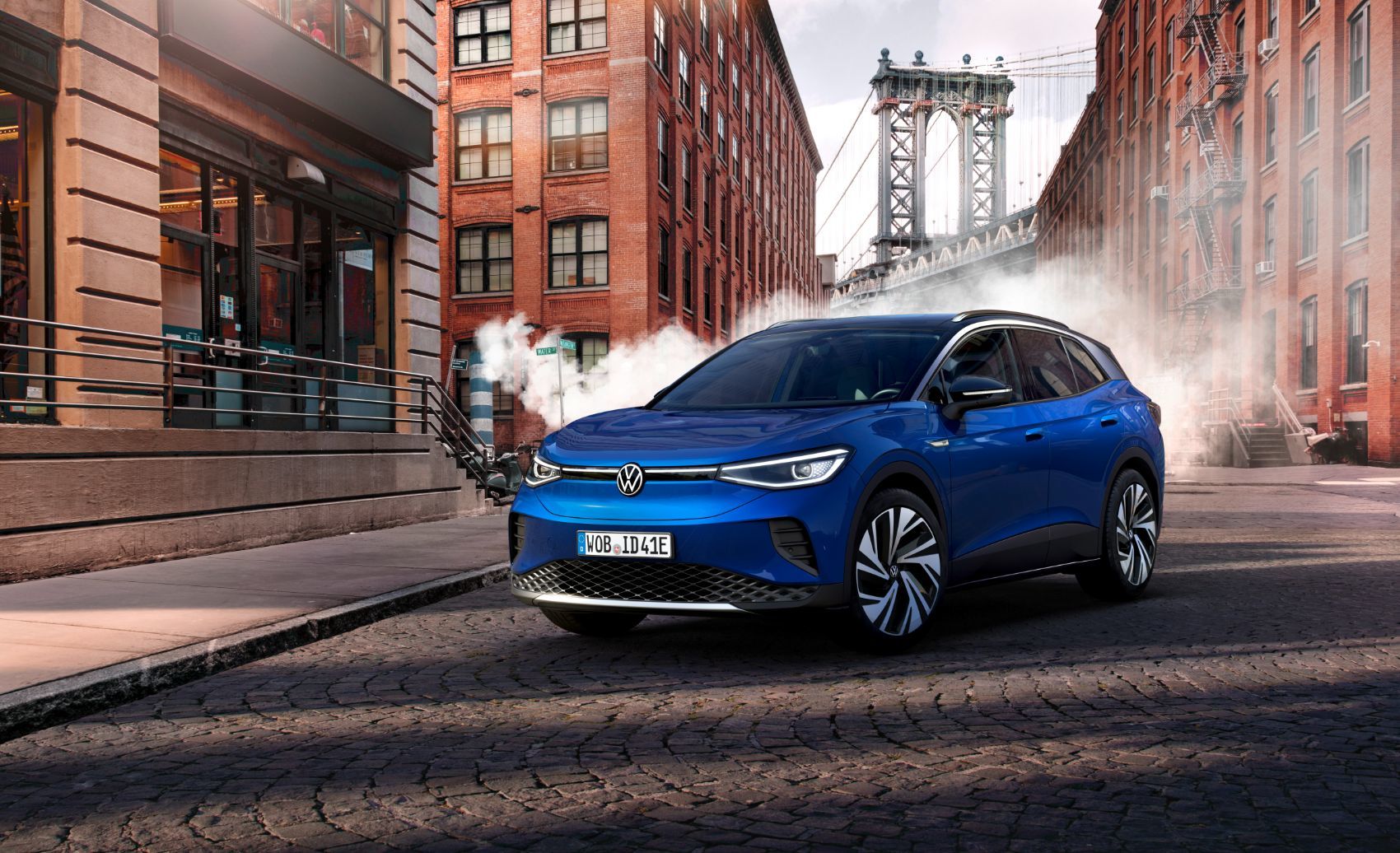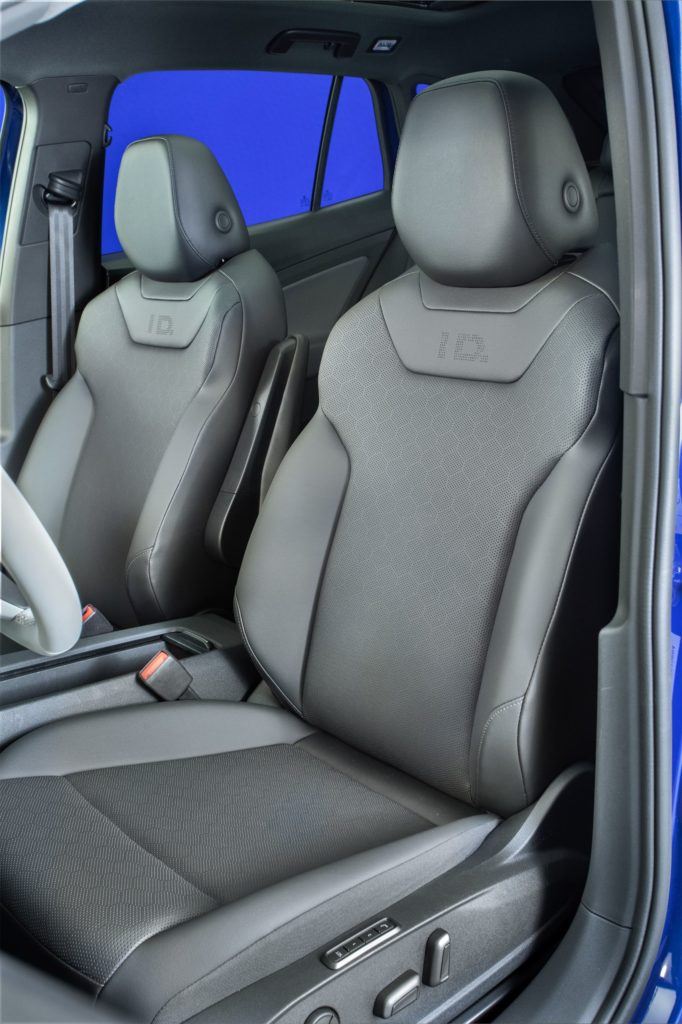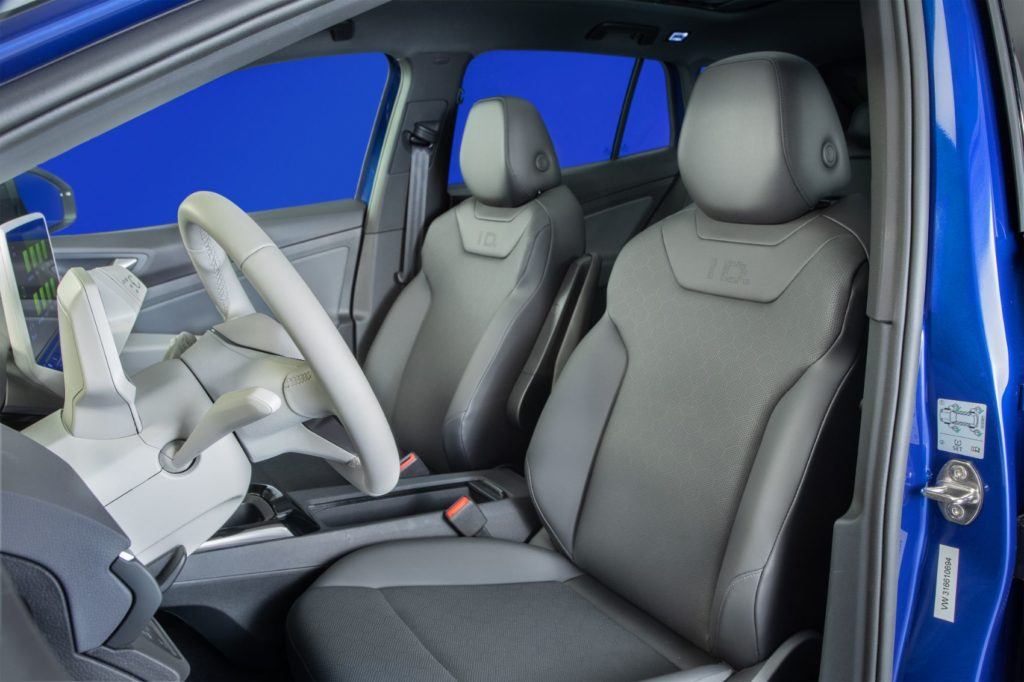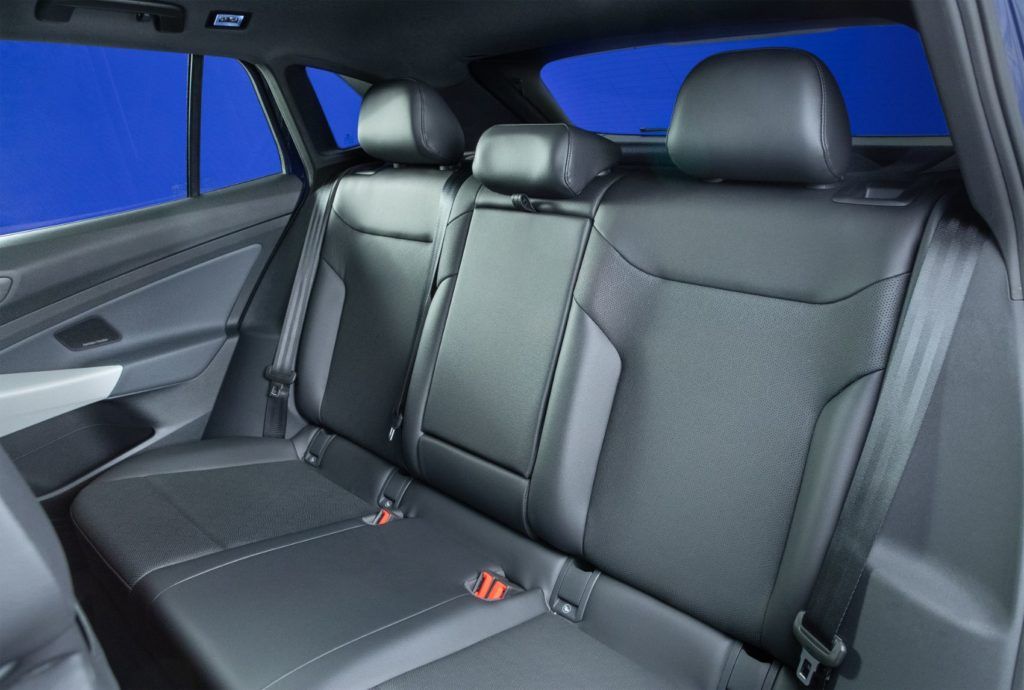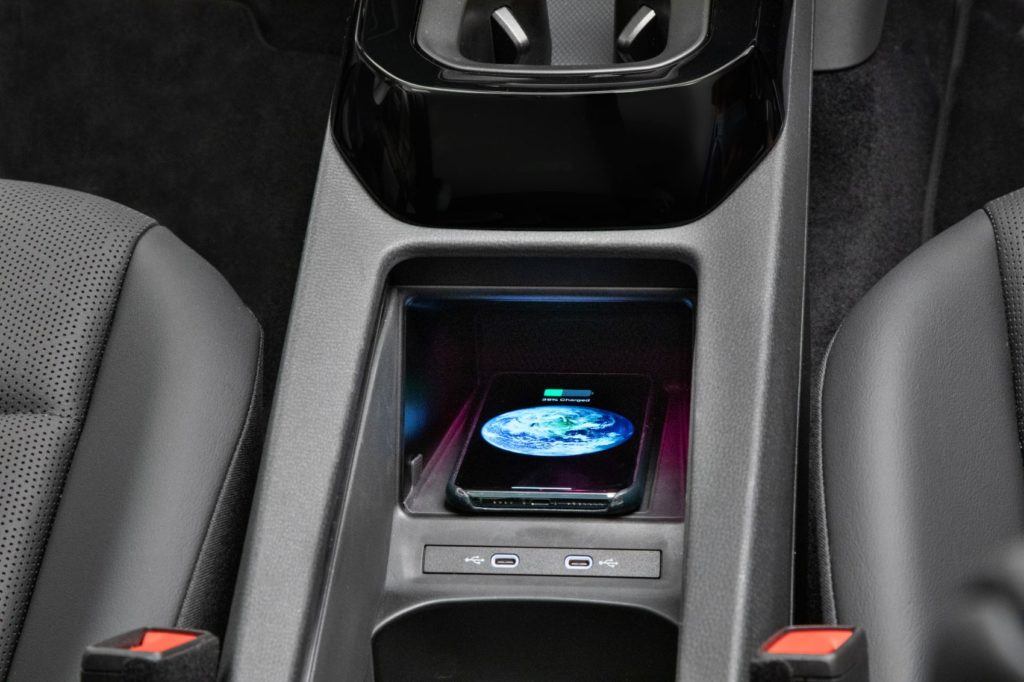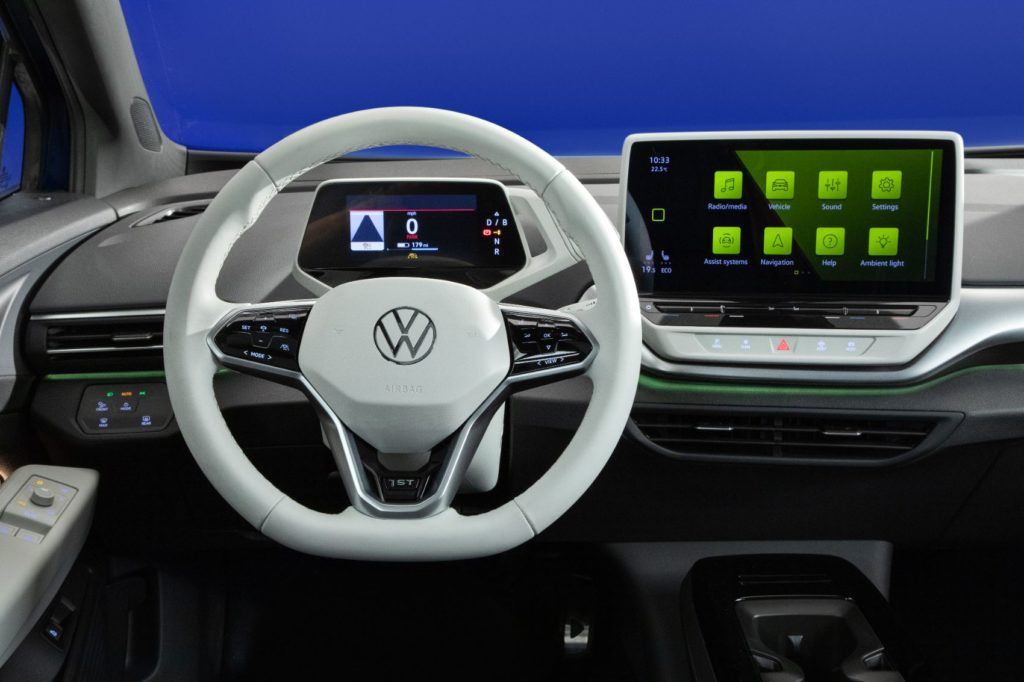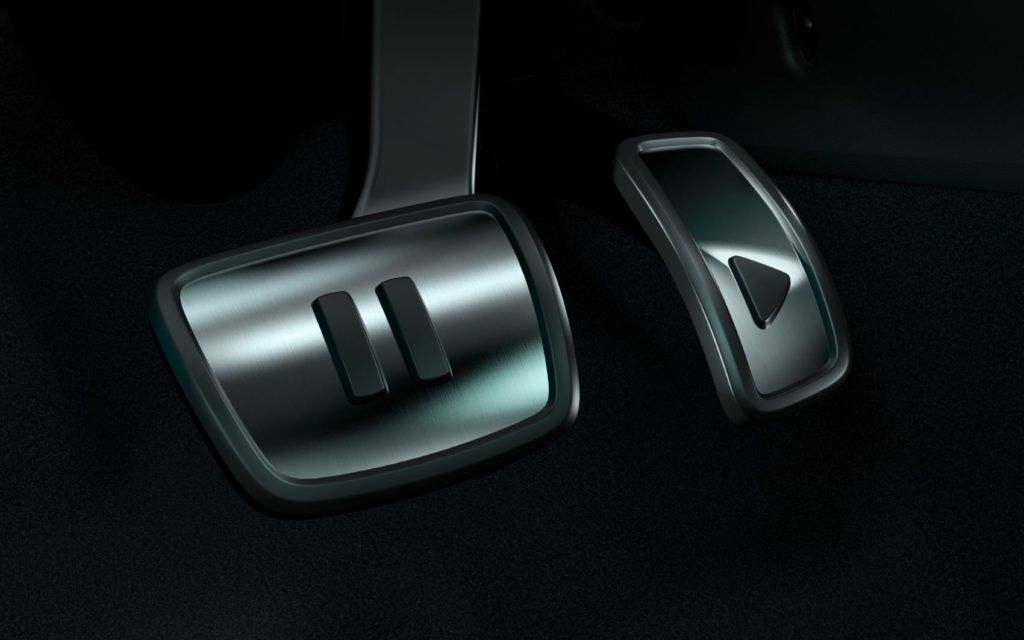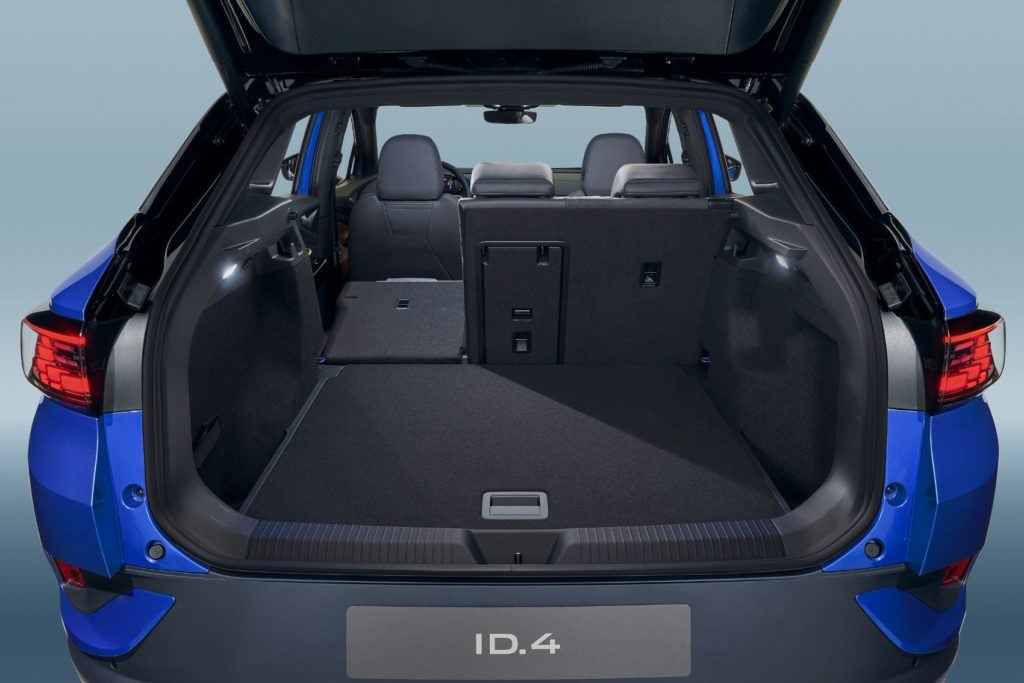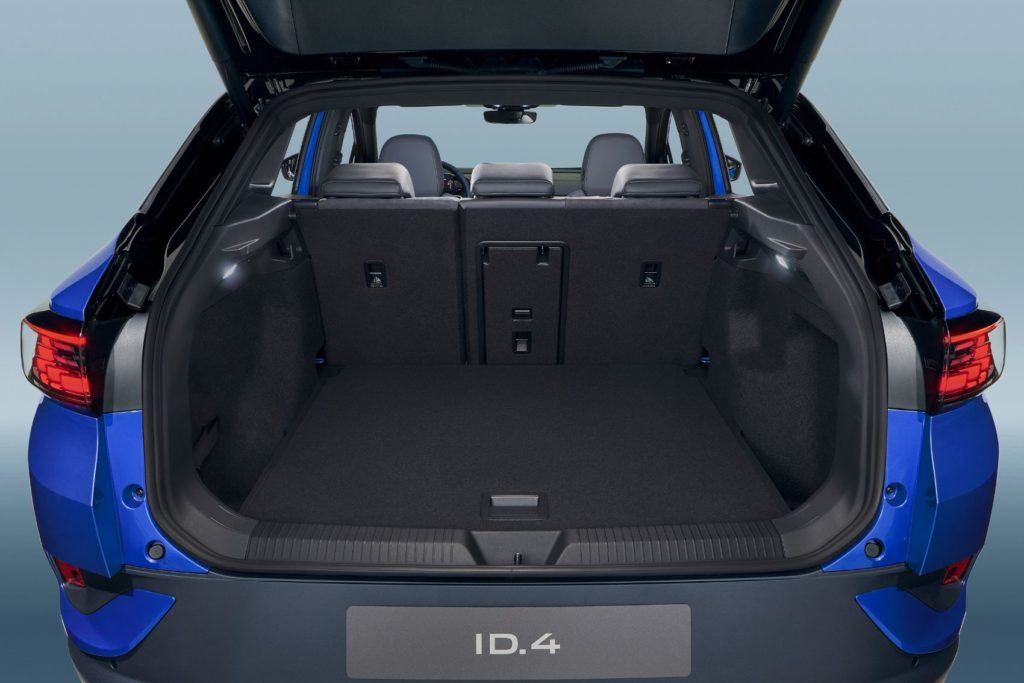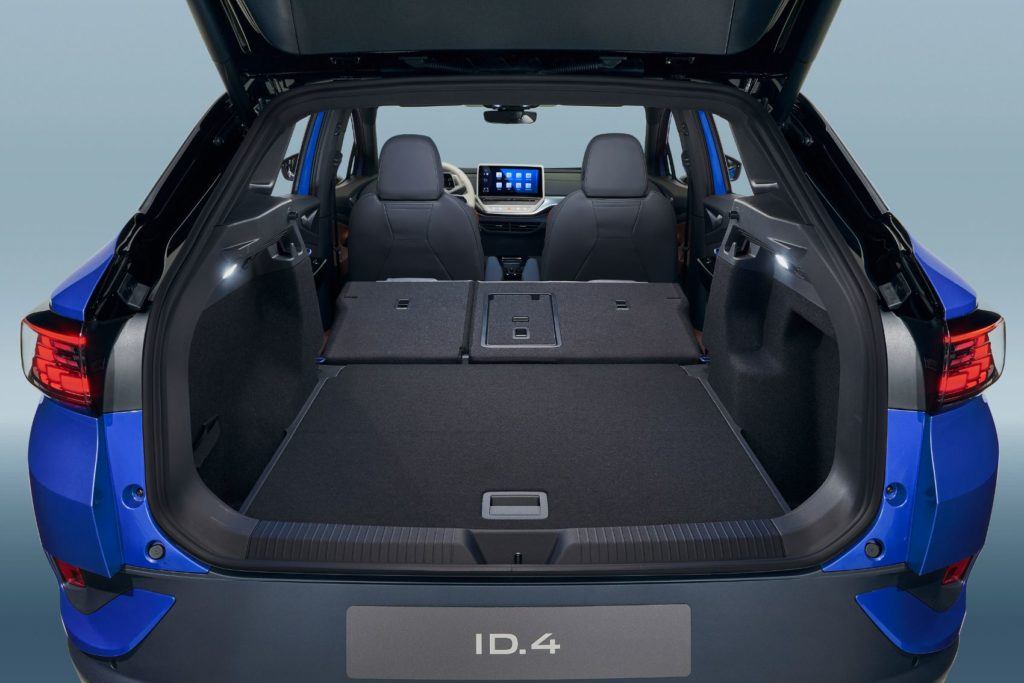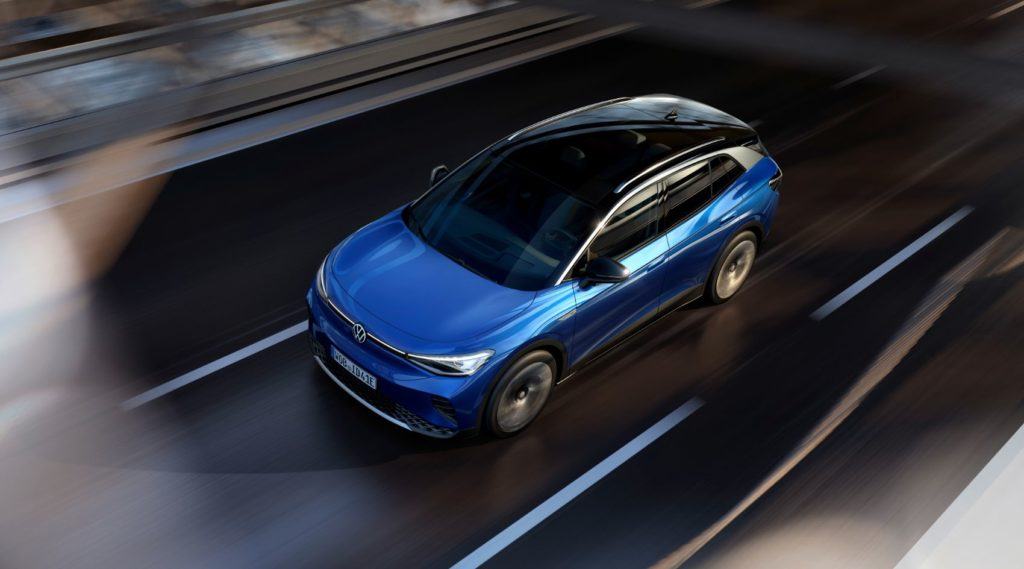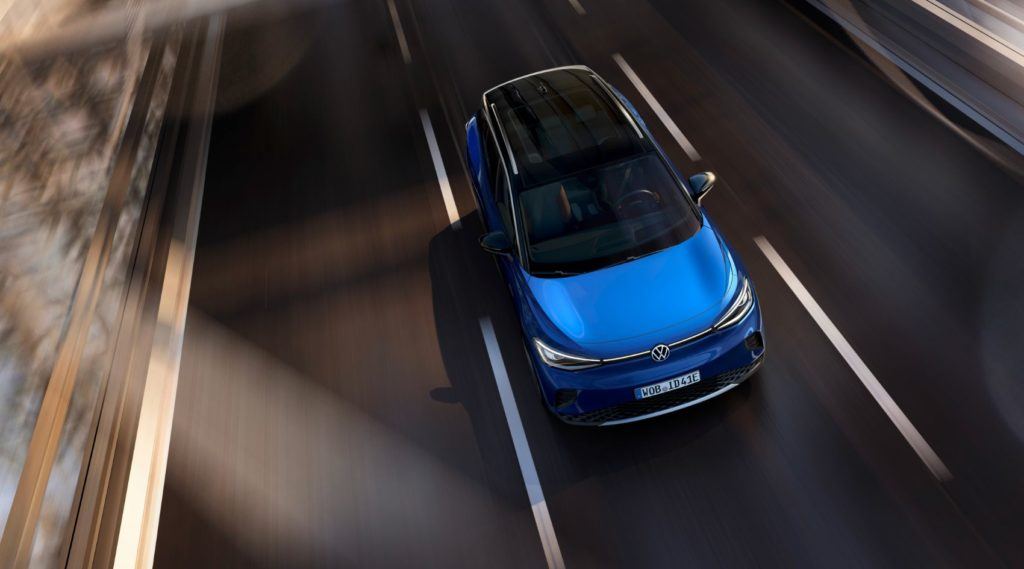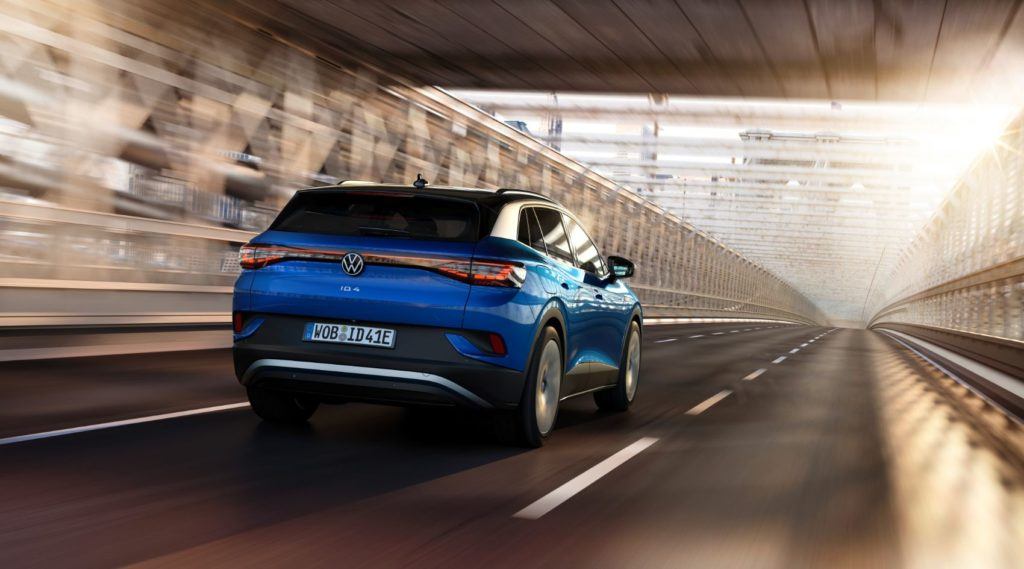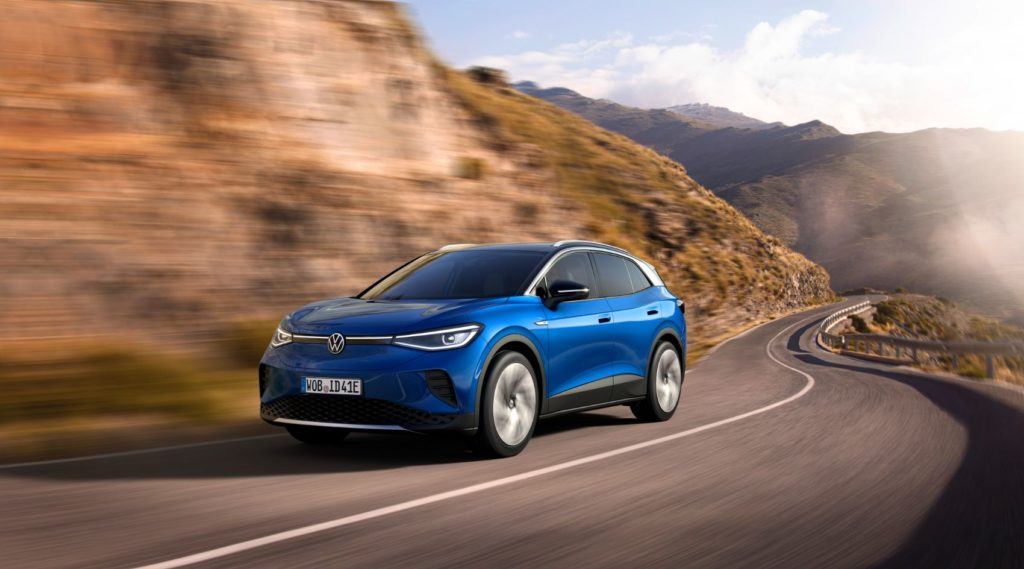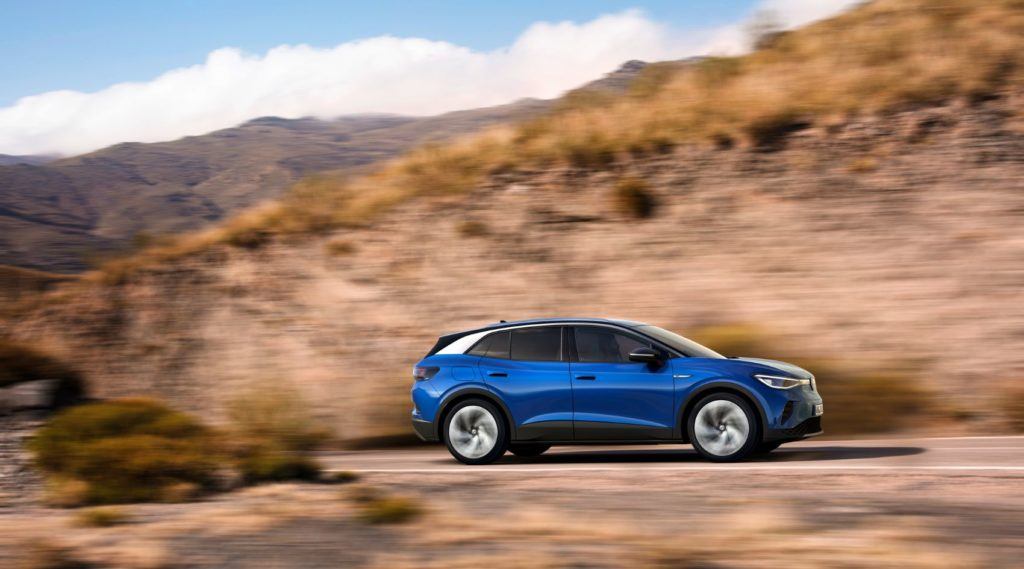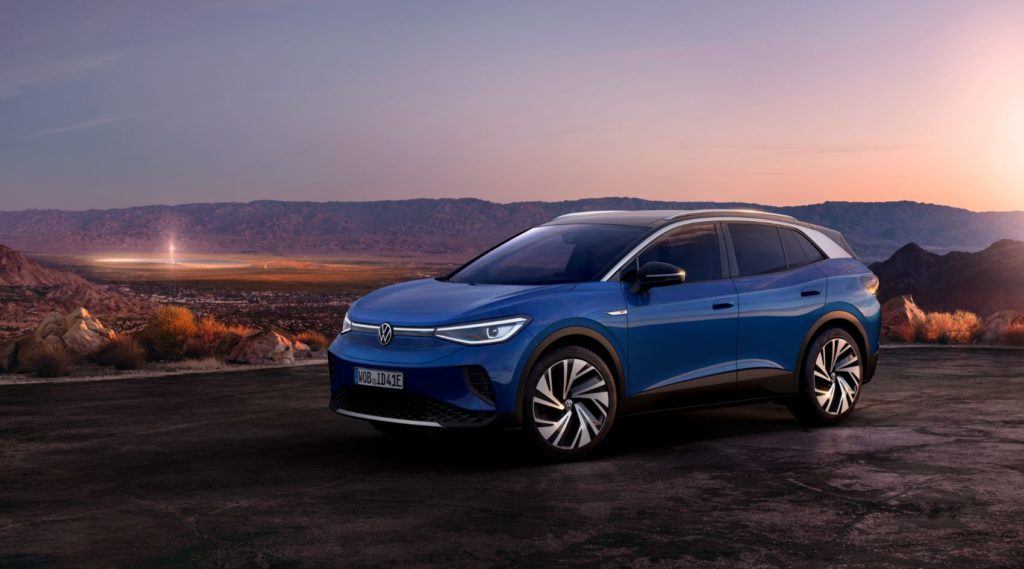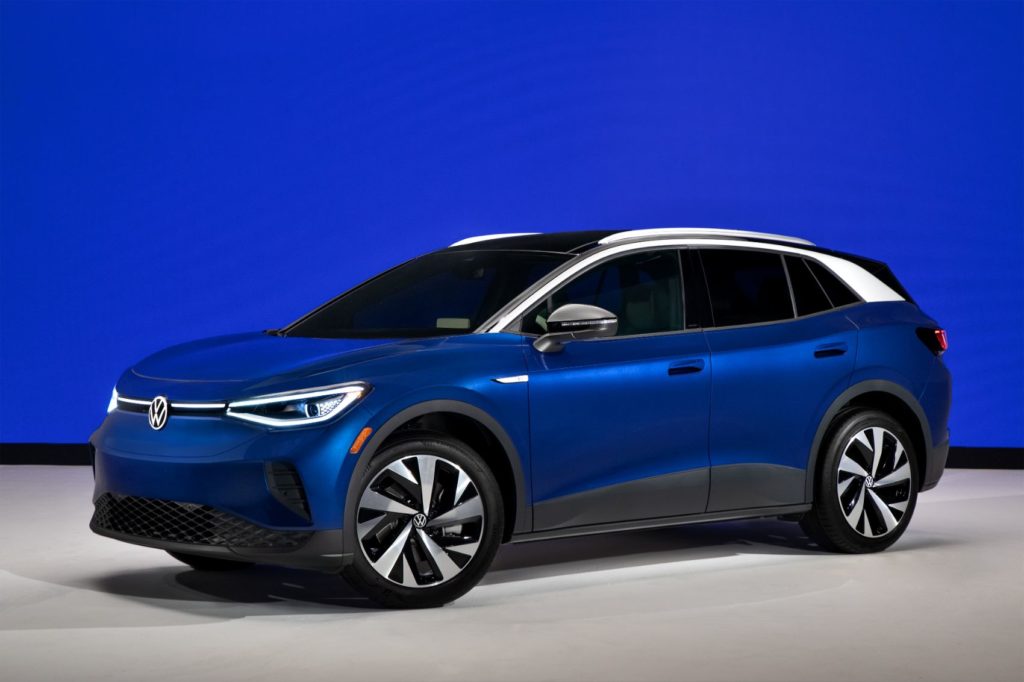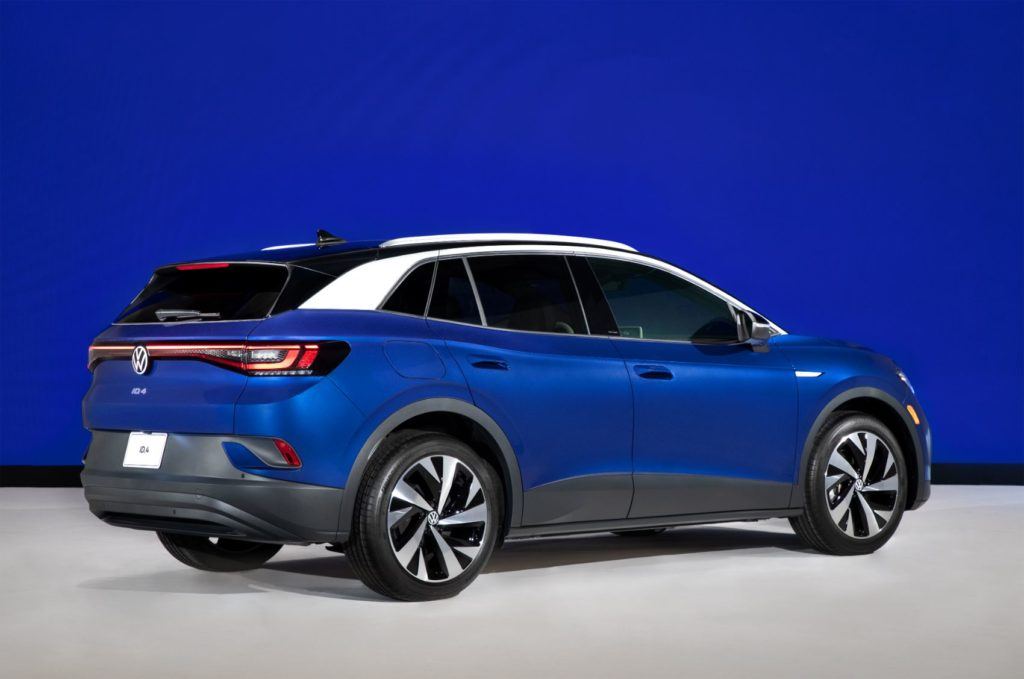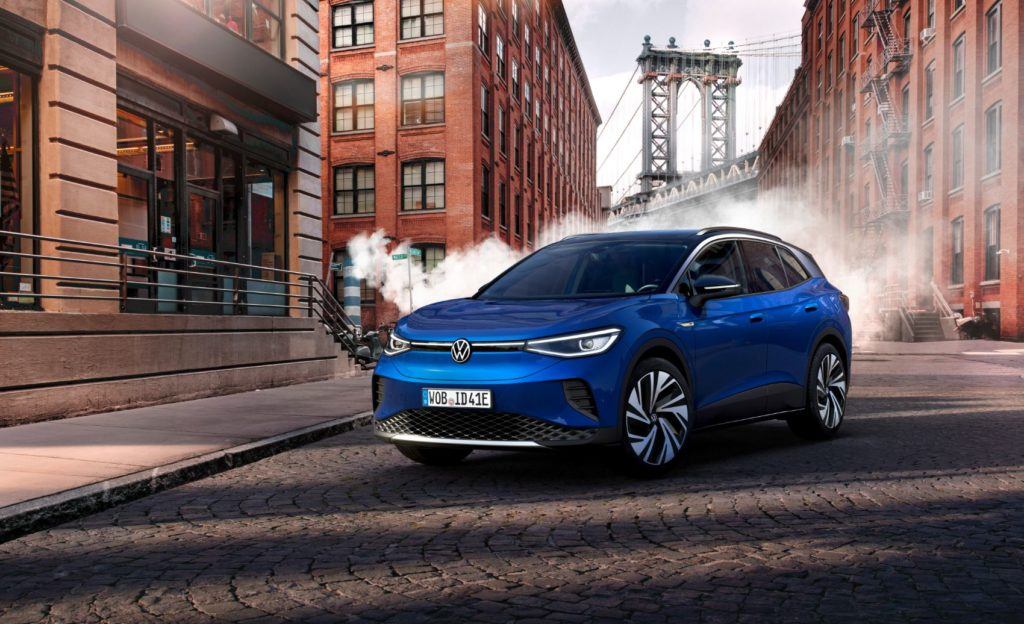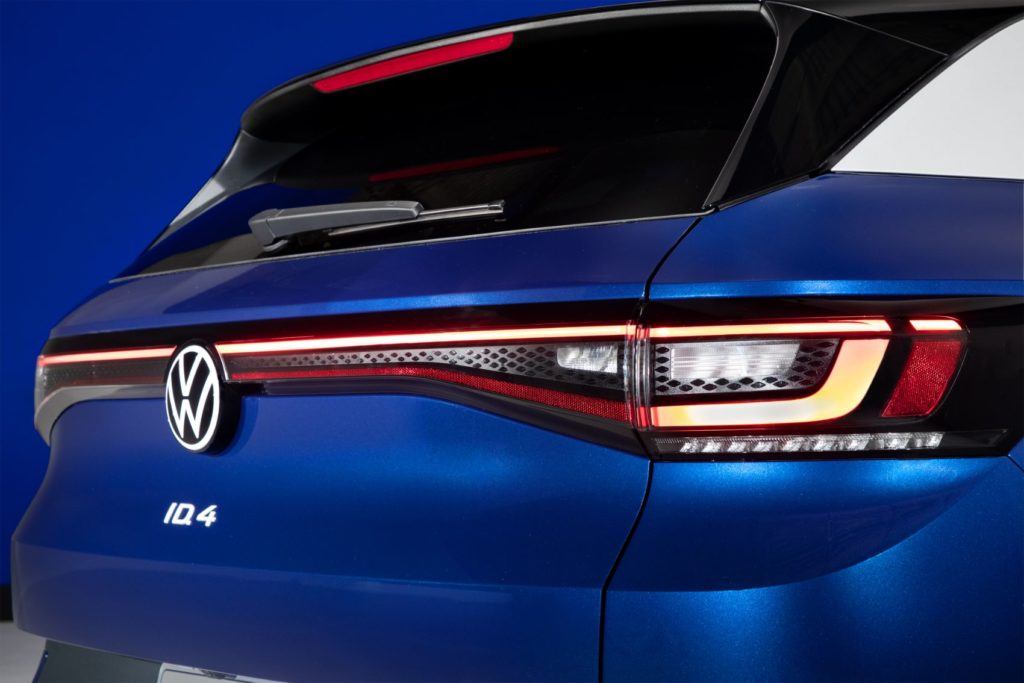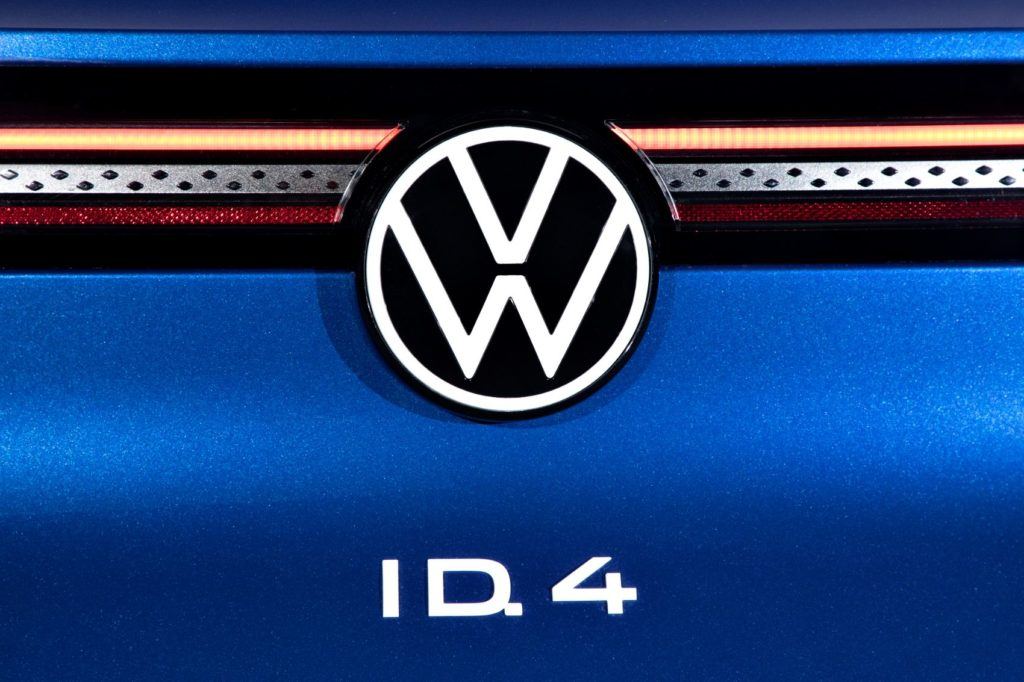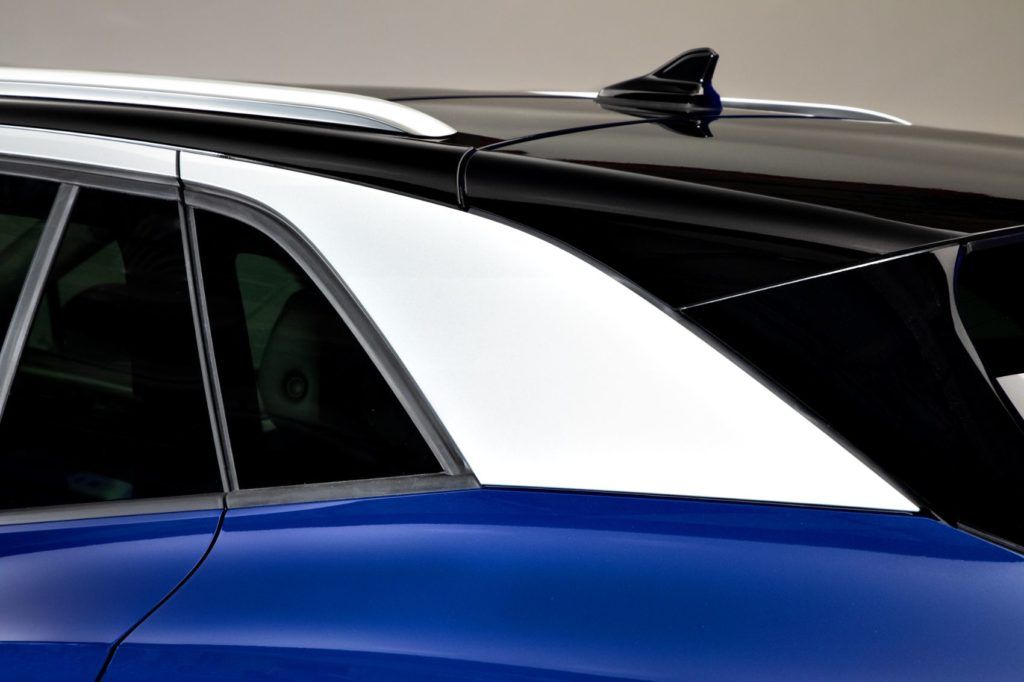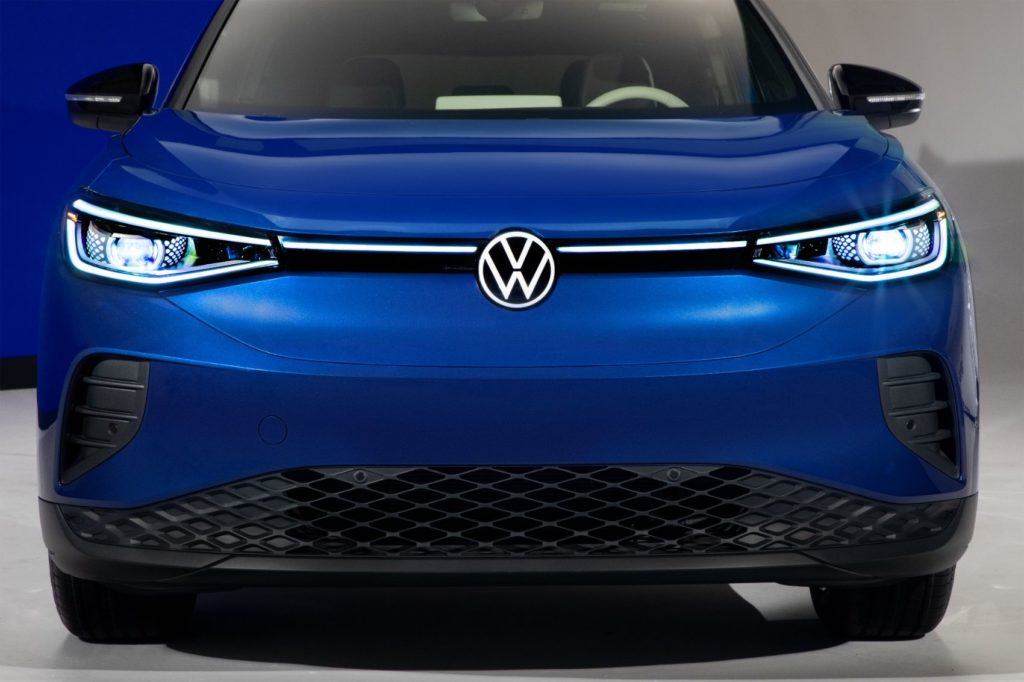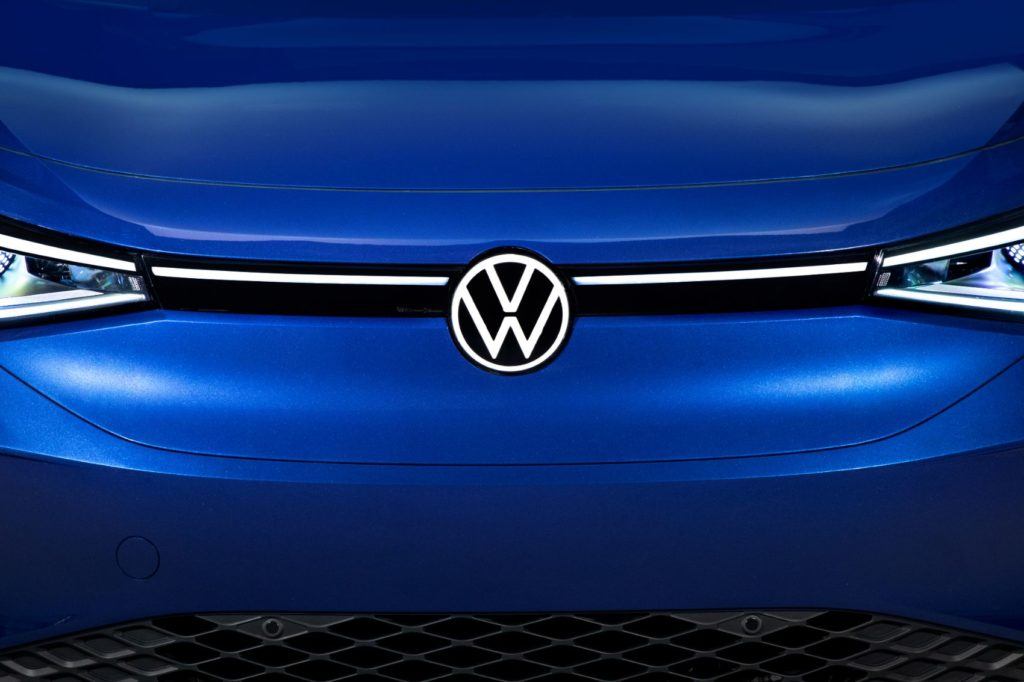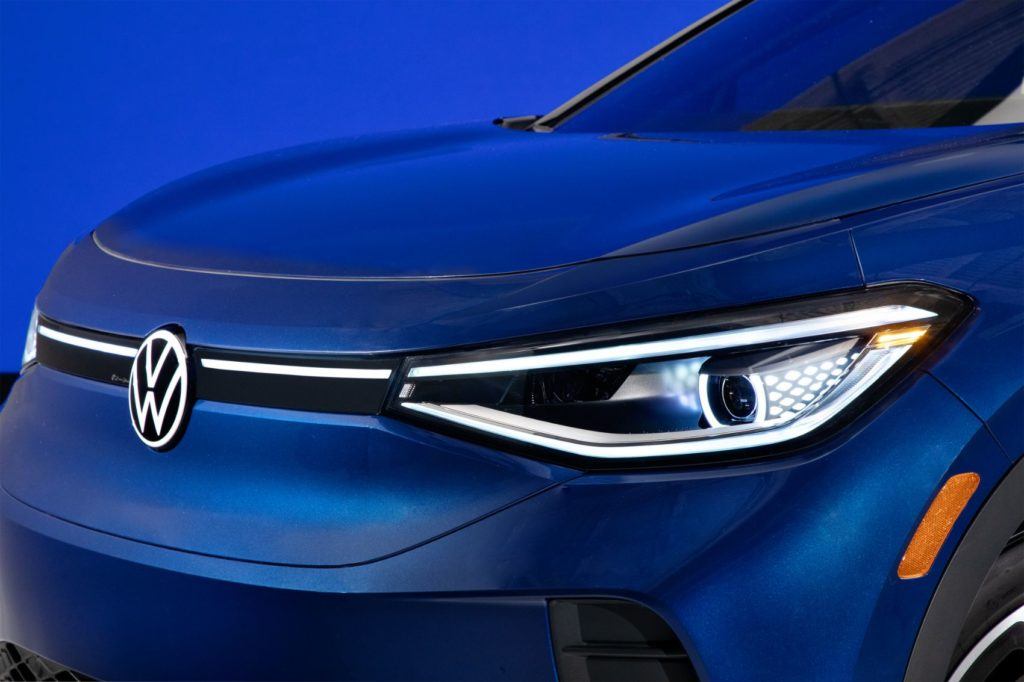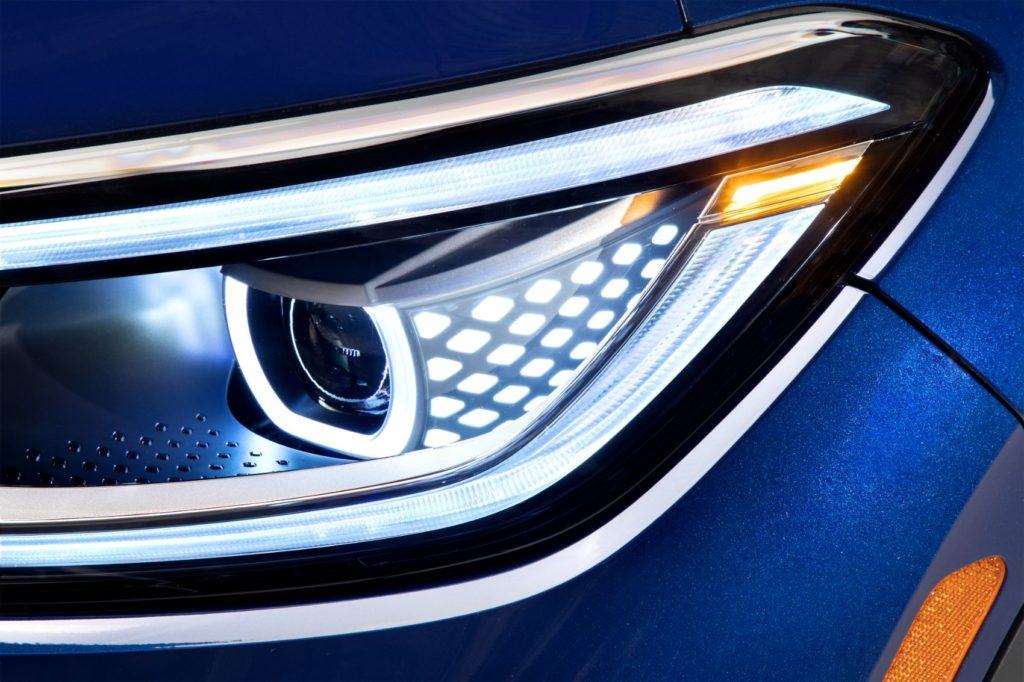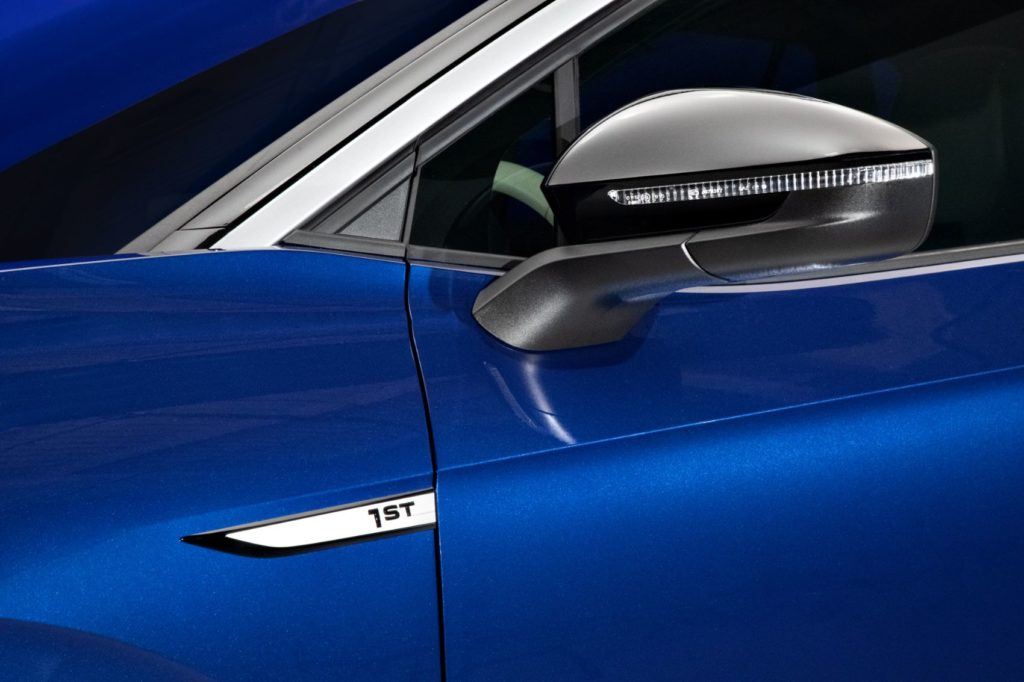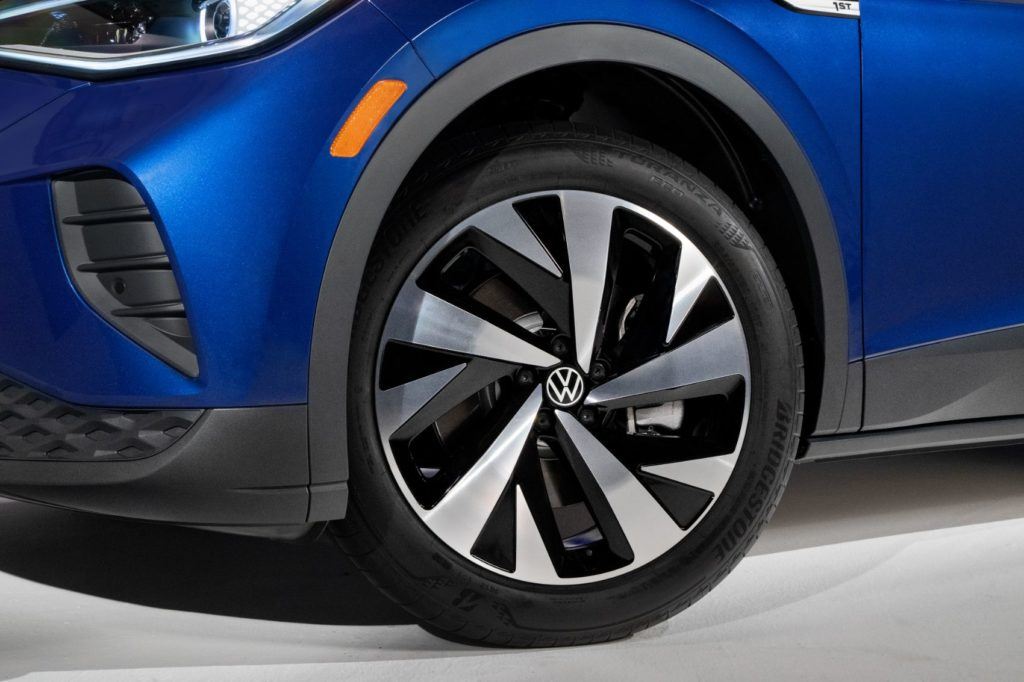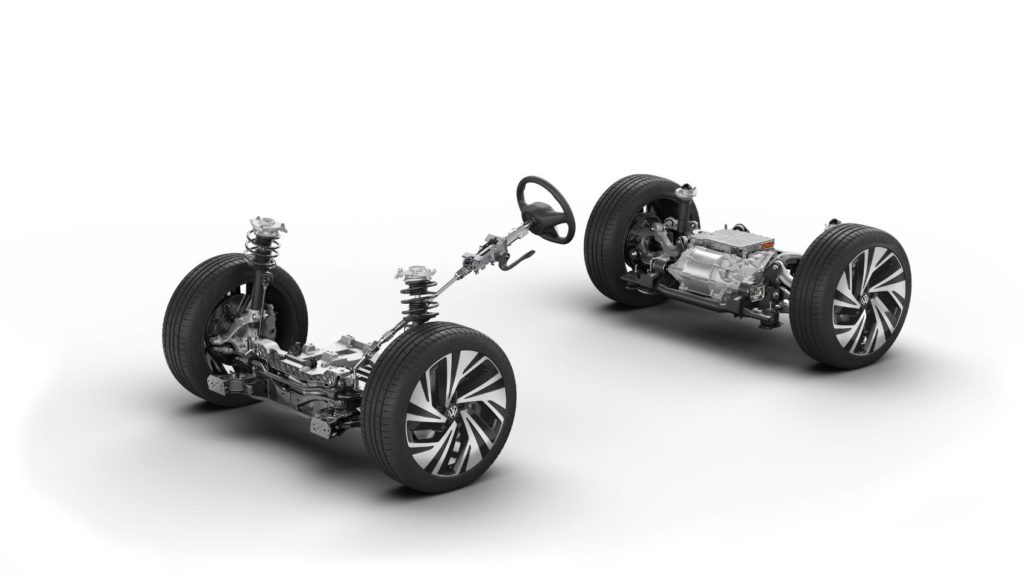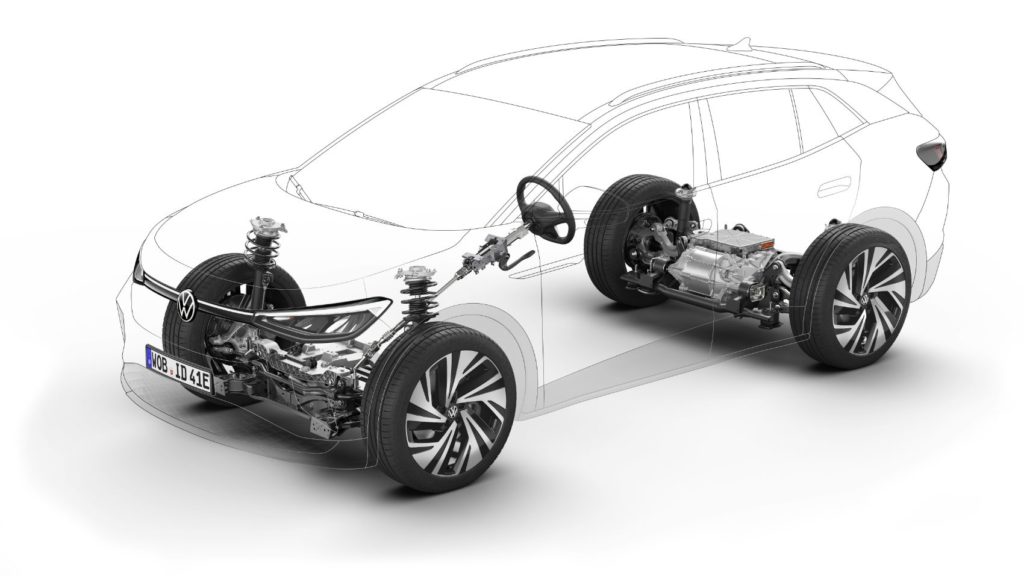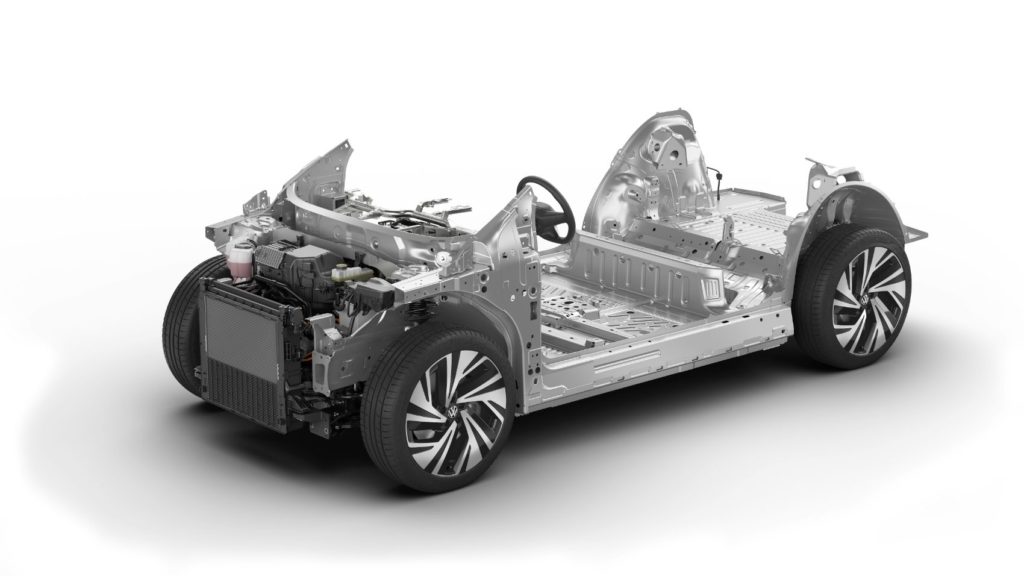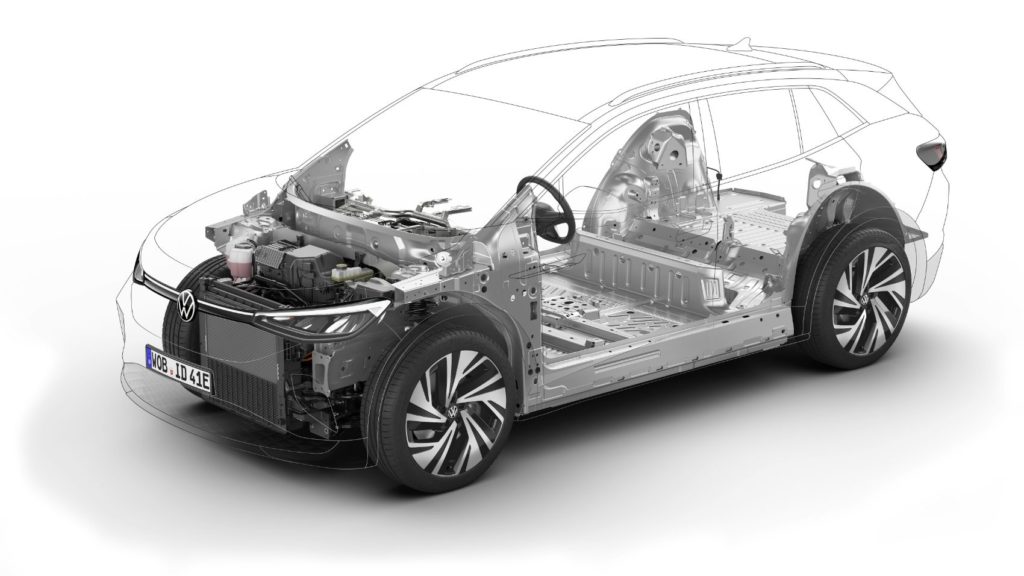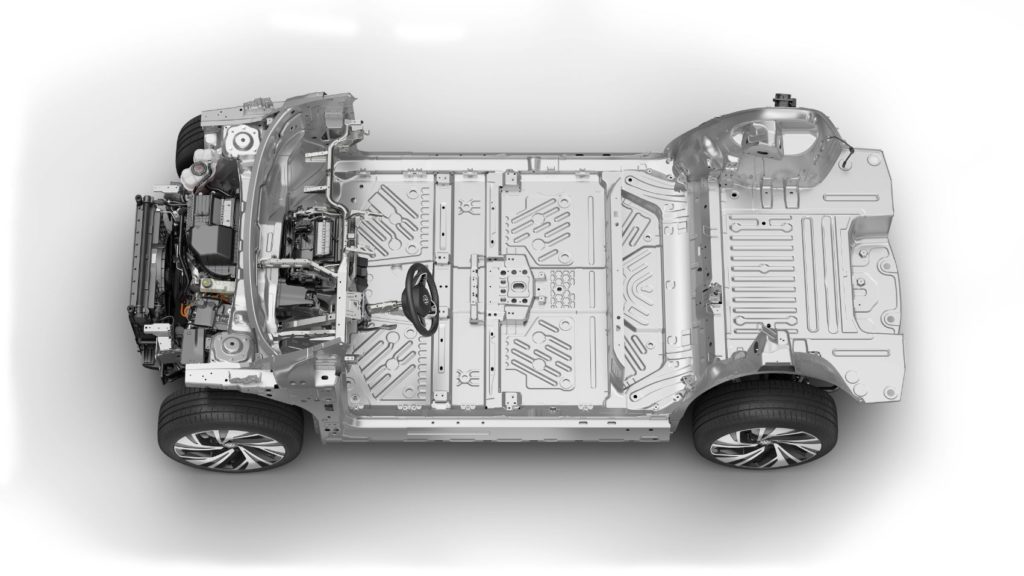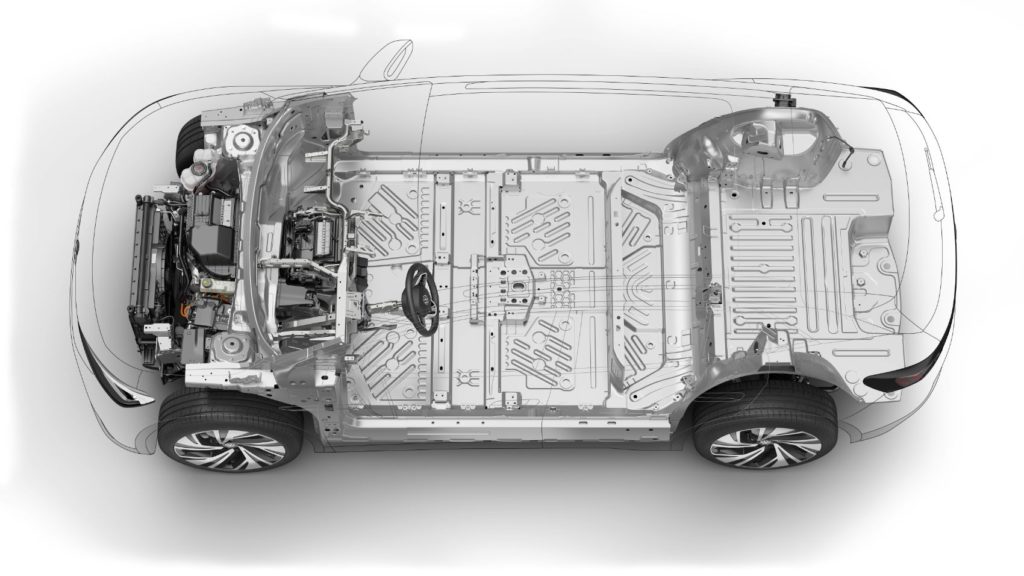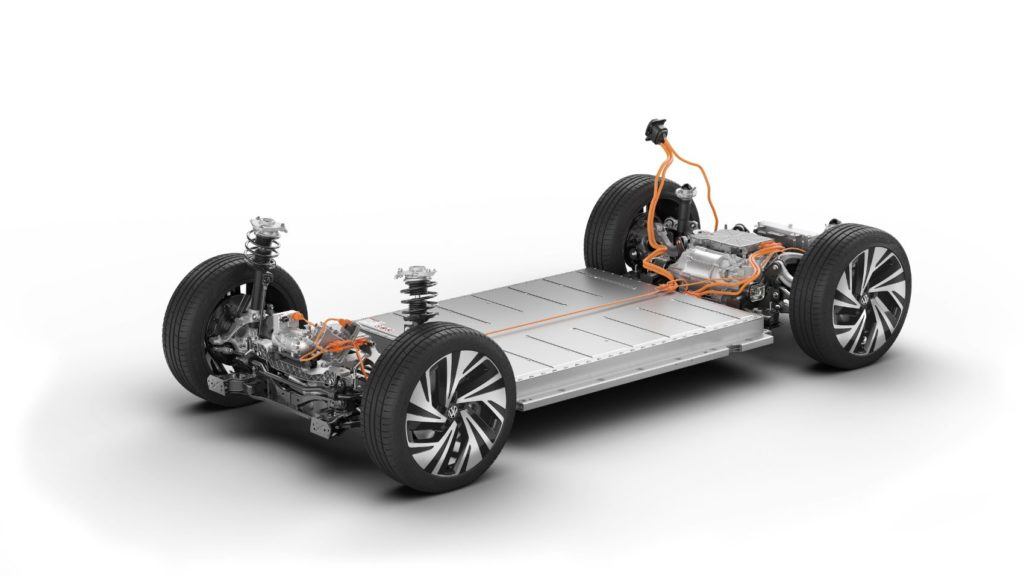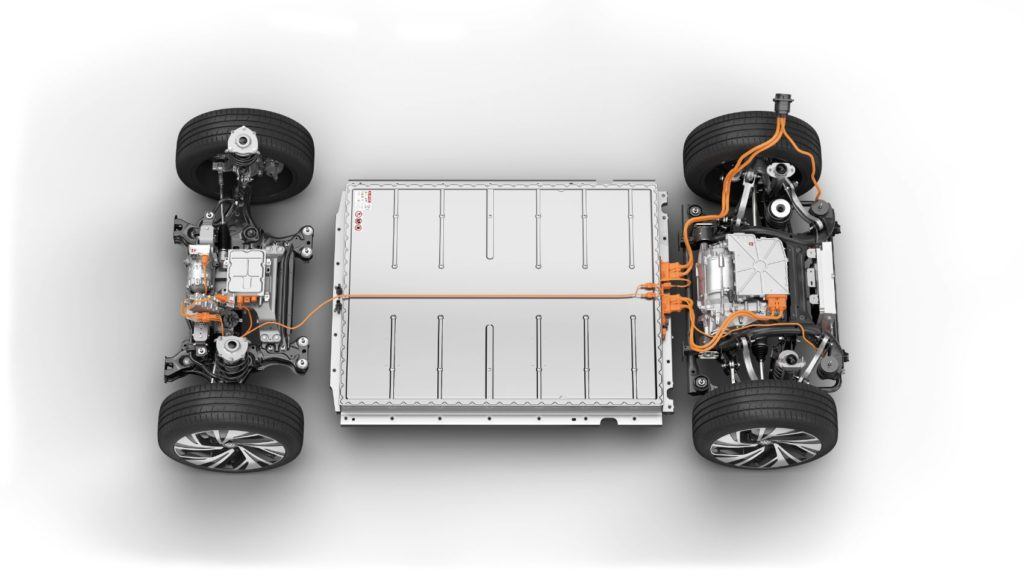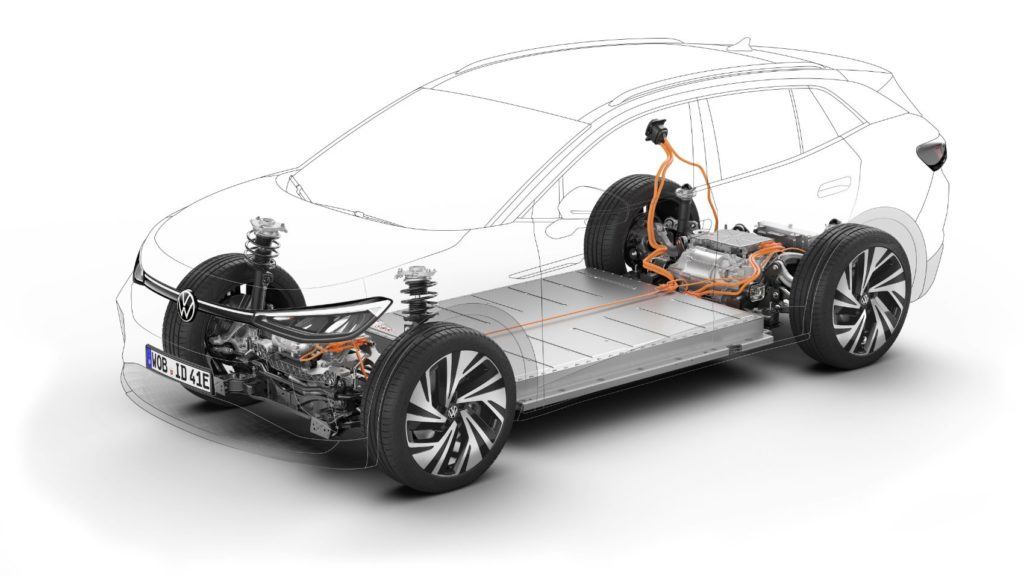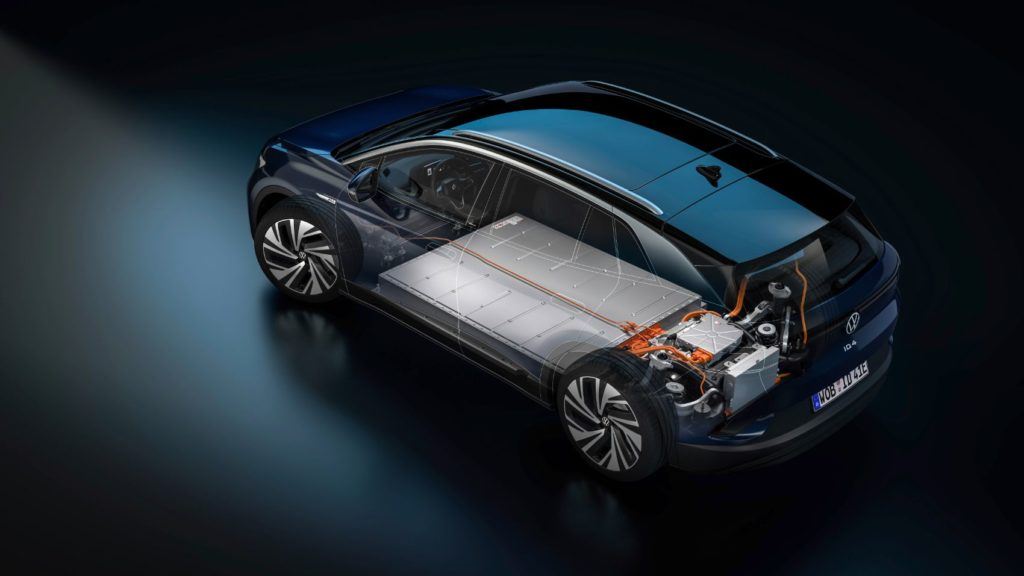The 2021 Volkswagen ID.4 is a natural evolution of the VW I.D. Crozz concept we first saw at the 2017 Los Angeles Auto Show. The newest ID.4 compact SUV is VW’s first long-range EV to be sold stateside, and it comes after denying us its first all-electric vehicle, the VW ID.3 hatchback. When you think about it, Americans are head-over-heels in love with SUVs nowadays, and VW wants a slice of the pie with the ID.4 electric SUV.
“The ID.4 was engineered, loaded and priced to win the hearts of SUV owners who are simply ready to go electric – and fall in love with Volkswagen again,” said Scott Keogh, CEO, Volkswagen Group of America. “It drives like a GTI, it has the packaging of a Tiguan, and the purpose of the Beetle. All the best things about VW in one package.”
What Is The VW ID.4?
The 2021 ID.4 is Volkswagen’s first all-electric SUV. The aerodynamically-optimized body is sitting on the German automaker’s newest MEB platform, making it 4.6 inches shorter than an equivalent VW Tiguan. Despite this, the wheelbase is only 0.9 inches shorter than a Tiguan to offer more room for both people and cargo.
To give you an idea, the VW ID.4 is around 1.9 inches lower than a Tiguan, but it’s also half-an-inch wider. The VW ID.4 is strictly a five-seat SUV with 99.9 cubic feet of passenger volume and 30.3 cubic feet of cargo room behind the rear seats. Fold the seats down, and you have 64.2 cubic feet of space to carry larger items.
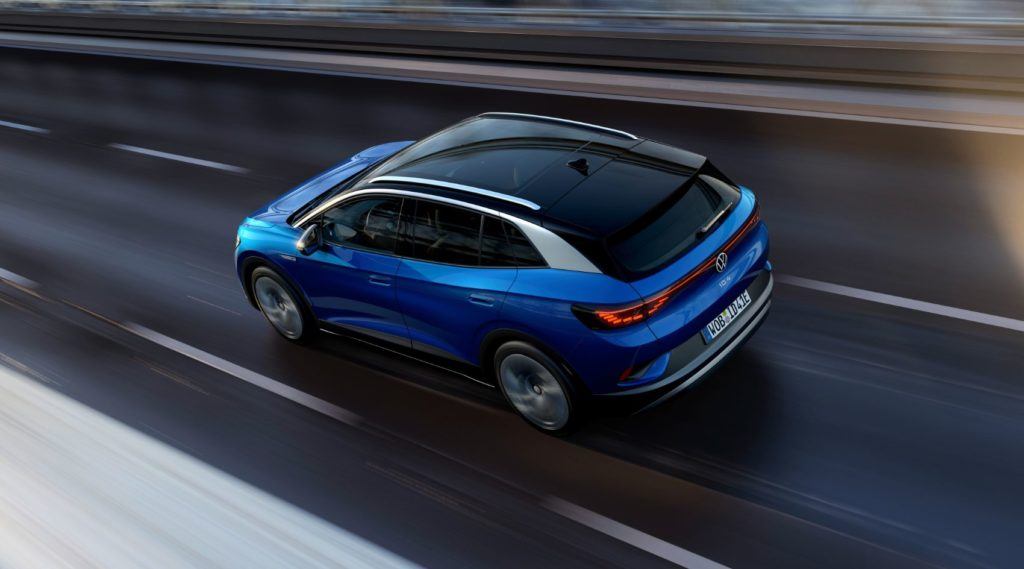
2021 Volkswagen ID.4: Powertrain & Charging
The 2021 VW ID.4 will initially arrive with a single rear-mounted electric motor and an 82 kWh battery pack. This rear-wheel drive variant is good for 201 horsepower, 228 lb-ft. of torque, and an EPA-confirmed 260 miles of driving range, ten miles more than previous estimates.
The ID.4 has an electrical architecture that supports both AC and DC fast charging capabilities. It has a standard 11 kW onboard charger that replenishes 33 miles of range in an hour of charging. Hook it up to a level 2 charger, though, and you can achieve a full charge in around seven or eight hours.
However, if you hook it up to a DC fast-charging station, you can top up the batteries from five to 80 percent in 38 minutes. And if you can’t stop thinking about range anxiety, hear this: VW is offering three years complimentary of fast charging with Electrify America! If you’re looking for additional incentives to choose the VW ID.4 over other electric SUVs like the Kia Niro EV, Tesla Model Y, or the Hyundai Kona Electric, three years of fast charging should do the trick.
Additionally, VW is introducing a dual-motor version of the ID.4, but it won’t be arriving until late 2021 at the earliest. Volkswagen promises a combined output of 302 horsepower for this all-wheel drive ID.4.
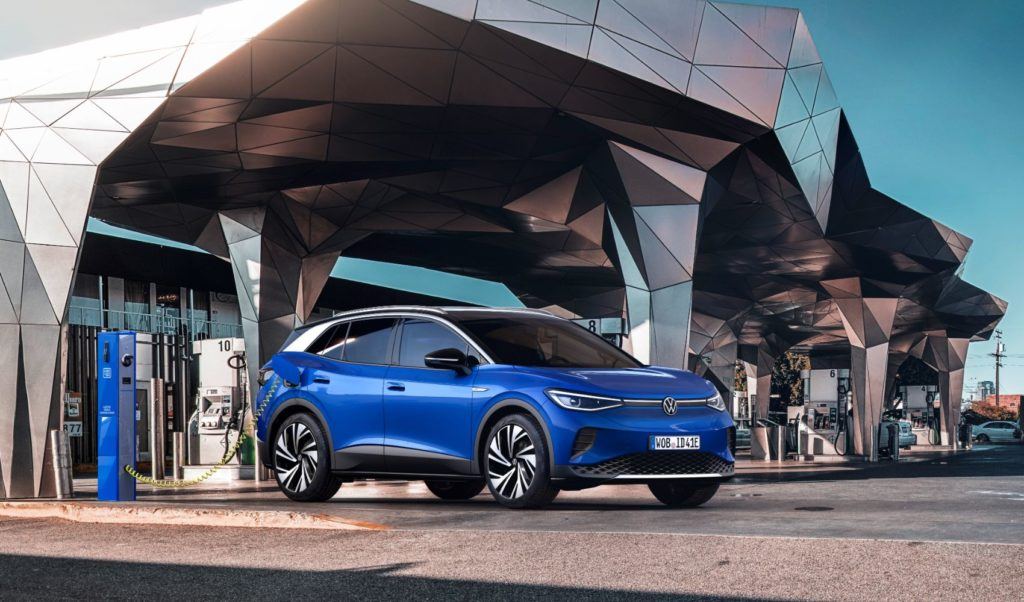
2021 VW ID.4: Subtle Beauty Inside & Out
You’ll be hard-pressed to find a single brash or polarizing body panel on the 2021 VW ID.4. It pretty much resembles the eighth-gen Golf with sculpted bumpers, sweptback headlights, and flowing lines. ID.4 models with the Statement package receive an illuminated VW logo and a fancy light line at the front. The vehicle has a low greenhouse, defined shoulder lines, and flush door handles, the latter of which are also illuminated for your convenience. For what it’s worth, the VW ID.4 looks like a “normal” crossover.
Meanwhile, the interior has a simple, minimalist design, but don’t let the normalcy fool you. The ID.4 is as high-tech as a modern electric car should be. The driver will have a 5.3-inch digital instrument panel while passengers can marvel at the 10-inch infotainment display (upgradeable to a 12-inch Discover Pro Max display with the Statement package). Vehicle controls are accessible via touch-sensitive buttons or natural voice commands, while the steering wheel has an array of multi-function buttons.
Base models get black cloth seats while higher variants receive either gray or black leatherette upholstery. Standard features include dual-zone climate control, keyless entry, rain-sensing wipers, an auto-dimming rearview mirror, a heated steering wheel, heated side mirrors, and a heated windshield for all-wheel drive models. The Statement package includes 12-way power seats with massaging and memory functions and ambient lighting with 30 different colors.
Standard VW IQ.Drive
The 2021 Volkswagen ID.4 is brimming with advanced safety tech courtesy of the brand’s IQ.Drive package. All ID.4 variants come standard with autonomous emergency braking with pedestrian monitoring, blind-spot monitoring, rear traffic alert, lane-keeping assist, adaptive cruise control, high beam control, and park distance control, among many others. Additionally, the ID.4 has six airbags (with side curtain airbags) and electronic stability control.
2021 Volkswagen ID.4: Pricing & Availability
What we really like about the 2021 VW ID.4 is the aggressive pricing strategy. Unlike Tesla, VW is taking a different route and is planning to offer genuinely affordable electric cars instead of bombarding the market with exorbitantly-priced variants. The VW ID.4 has a base price of $39,995 for the rear-wheel drive ID.4 Pro (before considering up to $7,500 in federal tax credits). This particular model will be available in early 2021.
On the other hand, the ID.4 Pro with all-wheel drive starts at $43,695 (before tax credits). The Statement and Gradient packages will add $4,500 and $1,500 to the base price, respectively. VW is also releasing a limited-run 1st Edition model later this year. With prices starting at $43,995 (before tax credits), the 1st Edition has unique badging, black mirror caps, a tow hitch, and white interior components.
Initial production of the ID.4 will be at VW’s Zwickau plant in Germany, but production will shift to Chattanooga, Tennessee, by 2022.
Alvin Reyes is the Associate Editor of Automoblog. He studied civil aviation, aeronautics, and accountancy in his younger years and is still very much smitten to his former Lancer GSR and Galant SS. He also likes fried chicken, music, and herbal medicine.
2021 VW ID.4 Gallery
2021 VW ID.4 Platform Gallery
Photos & Source: Volkswagen of America, Inc.

